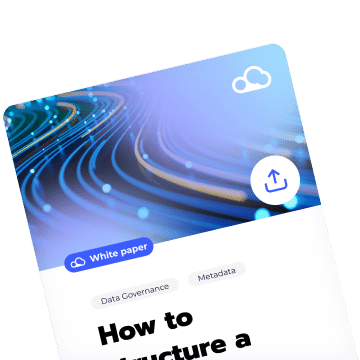In an increasingly data-driven world, the term data visibility has become more than just a buzzword; it is a critical concept that organizations must understand and prioritize to thrive in the digital age. Data visibility is the key to unlocking valuable insights, enhancing decision-making processes, and ensuring compliance with data regulations.
In this article, we will delve deep into what data visibility is, why it is important, and how it can benefit your organization.
Understanding data visibility
Data visibility refers to the ability to access, monitor, and track data throughout its entire lifecycle. It encompasses the transparency and accessibility of data within an organization, ensuring that data is not only available but also understandable and usable by those who need it.
In essence, data visibility enables stakeholders to gain insights into their data assets, understand their data’s lineage, and make informed decisions based on data-driven insights.
The role of big data visibility
While data visibility encompasses all types of data, including structured and unstructured data, big data visibility focuses specifically on the management and visibility of vast and complex datasets. Big data, characterized by its volume, velocity, and variety, poses unique challenges for organizations. However, big data visibility solutions help organizations harness the power of their big data by providing comprehensive monitoring, tracking, and access capabilities.
Why data visibility matters
Now that we have defined data visibility, let us explore why it is essential for organizations across various industries.
- Improved decision-making: Data-driven decision-making has become a cornerstone of successful businesses. With data visibility, organizations can access real-time data, historical trends, and predictive analytics, enabling them to make informed decisions quickly. Whether it is identifying market trends, optimizing supply chains, or understanding customer behavior, data visibility empowers organizations to stay ahead of the curve.
- Enhanced data security & compliance: Data breaches and compliance violations can have severe consequences for organizations. Data visibility helps in identifying potential vulnerabilities and breaches, allowing organizations to take proactive measures to secure their data. Additionally, it aids in ensuring compliance with data protection regulations like GDPR, HIPAA, and CCPA by providing visibility into data usage, storage, and access.
- Efficient data management: Effective data management is crucial for maximizing the value of your data assets. Data visibility tools, such as data catalogs and metadata management tools simplify data discovery and organization. This streamlines data governance processes, reduces data duplication, and improves data quality.
- Optimized operations: Data visibility enables organizations to optimize their operations across various departments. For instance, supply chain visibility can help organizations identify bottlenecks, reduce lead times, and enhance overall efficiency. Similarly, marketing teams can leverage customer data visibility to create targeted and personalized campaigns.
- Better customer experiences: In the age of personalization, understanding your customers is vital. Big data visibility allows organizations to collect and analyze customer data from various sources, providing valuable insights for tailoring products and services to individual preferences. This results in improved customer experiences and increased customer loyalty.
- Risk mitigation & incident response: In today’s digital landscape, organizations face an ever-growing array of cybersecurity threats and data breaches. Data visibility plays a crucial role in risk mitigation and incident response. When organizations have a comprehensive view of their data assets, they can quickly detect any anomalies or suspicious activities. This early detection enables proactive measures to be taken to prevent potential data breaches or cyberattacks. In the unfortunate event of a breach, data visibility tools assist in identifying the extent of the compromise, allowing organizations to respond promptly and minimize damage.
- Data monetization: Data has emerged as a valuable asset that organizations can monetize. Through data visibility, businesses can identify opportunities to monetize their data by selling insights, offering data-as-a-service (DaaS), or collaborating with other organizations in data-sharing partnerships. Big data visibility tools are instrumental in managing and packaging large datasets for external use, creating new revenue streams, and unlocking the economic potential of data.
Incorporating data visibility not only safeguards an organization’s data assets but also transforms them into strategic assets that can drive innovation and revenue growth. With these additional points, it becomes even more evident that data visibility is a foundational element for success in the digital era.
How to achieve data visibility
Achieving data visibility requires a strategic approach and the use of appropriate tools and technologies. Here are some key steps to consider:
- Data catalogs: A data catalog is a central repository that indexes and organizes data assets across the organization. It provides a searchable inventory of available data, making it easier for users to find and access the information they need. Implementing a data catalog is a crucial step in enhancing data visibility.
- Metadata management tools: Metadata management tools allow organizations to capture and manage metadata associated with their data assets. This metadata includes information about data sources, lineage, quality, and more. By maintaining comprehensive metadata, organizations can gain a deeper understanding of their data and its context.
- Data lineage: Data lineage provides a visual representation of how data flows through an organization’s systems and processes. It helps in understanding the origin of data, its transformations, and where it is used. Data lineage is a critical component of data visibility, especially for organizations dealing with complex data ecosystems.
The future of data visibility
As technology continues to evolve, the importance of data visibility will only grow. Organizations that invest in data visibility and big data visibility solutions will be better equipped to navigate the challenges and opportunities of the digital landscape. With the right tools and strategies in place, they can harness the full potential of their data assets and stay competitive in their respective industries.
Conclusion
Data visibility is not just a buzzword but a fundamental requirement for organizations in today’s data-driven world. It enables better decision-making, enhances data security and compliance, streamlines data management, optimizes operations, and improves customer experiences. To achieve data visibility, organizations should consider implementing data catalogs, metadata management tools, and data lineage solutions.
By prioritizing data visibility, organizations can pave the way for a brighter, data-driven future where insights and opportunities abound. Don’t get left in the dark – Embrace data visibility and empower your organization for success.
Still have questions about data governance? Turn to DataGalaxy to create your company’s data lineage mapping, develop a standardized business glossary, and much more! Check our calendar and select a date that works for you. Jumpstart your free 15-day platform trial access & start making the most of your data today!





